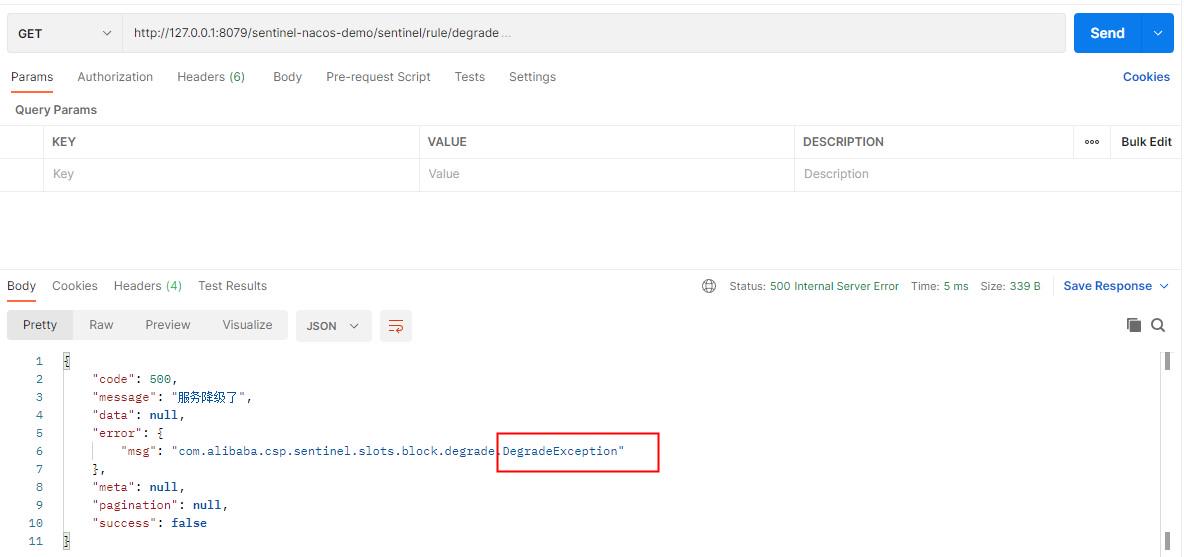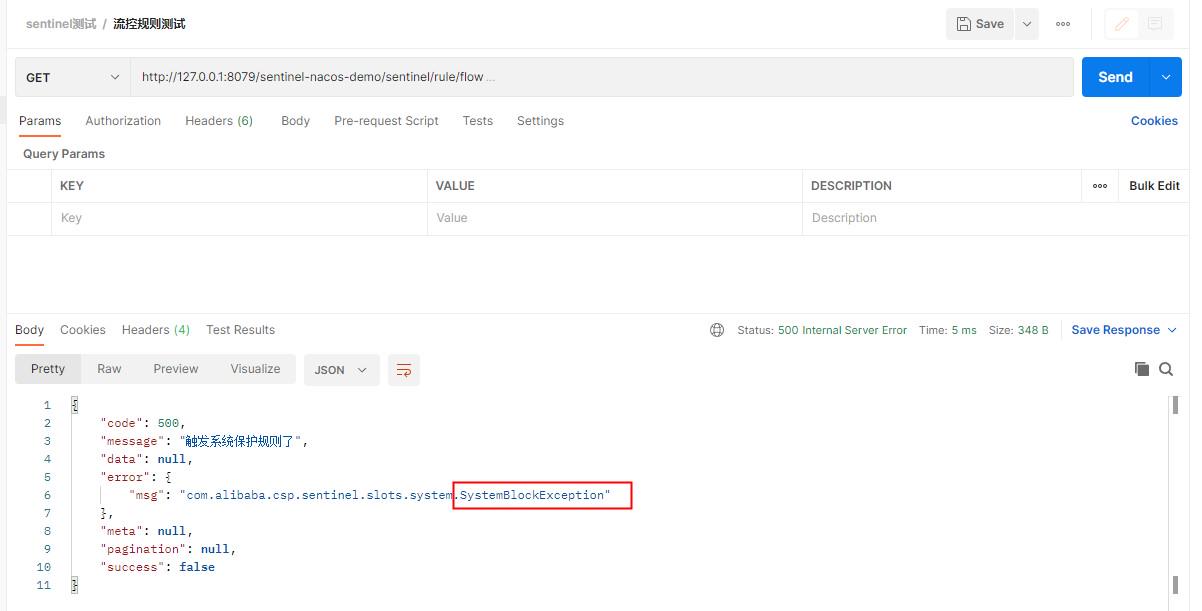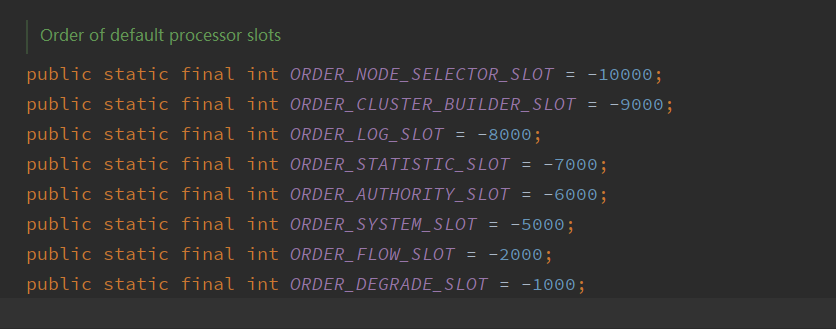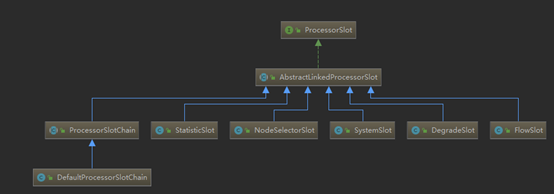1.背景1.1 简介Sentinel 以流量为切入点,从流量控制、熔断降级、系统负载保护等多个维度保护服务的稳定性。Sentinel 具有以下特征 丰富的应用场景:Sentinel 承接了阿里巴巴近 10 年的双
- 丰富的应用场景:Sentinel 承接了阿里巴巴近 10 年的双十一大促流量的核心场景,例如秒杀(即突发流量控制在系统容量可以承受的范围)、消息削峰填谷、集群流量控制、实时熔断下游不可用应用等。
- 完备的实时监控:Sentinel 同时提供实时的监控功能。您可以在控制台中看到接入应用的单台机器秒级数据,甚至 500 台以下规模的集群的汇总运行情况。
- 广泛的开源生态:Sentinel 提供开箱即用的与其它开源框架/库的整合模块,例如与 Spring Cloud、Apache Dubbo、gRPC、Quarkus 的整合。您只需要引入相应的依赖并进行简单的配置即可快速地接入 Sentinel。同时 Sentinel 提供 Java/Go/C++ 等多语言的原生实现。
- 完善的 SPI 扩展机制:Sentinel 提供简单易用、完善的 SPI 扩展接口。您可以通过实现扩展接口来快速地定制逻辑。例如定制规则管理、适配动态数据源等。
- 核心库(Java 客户端)不依赖任何框架/库,能够运行于所有 Java 运行时环境,同时对 Dubbo / Spring Cloud 等框架也有较好的支持。
- 控制台(Dashboard)基于 Spring Boot 开发,打包后可以直接运行,不需要额外的 Tomcat 等应用容器。
- sentinel官方文档:《官方文档地址》
- sentinel源码解析:《sentinel是如何限流的》
- sentinel常规知识点:《sentinel连环17问》
- 基于Spring boot 对接Sentinel;
- Nacos配置Sentinel规则信息;
- 测试流控规则,系统保护规则,熔断规则;
- Sentinel控制台数据展示问题;
- Nacos规则存储与Sentinel修改数据同步问题;
- Sentinel责任链模式分析
<!-- nacos配置--> <dependency> <groupId>com.alibaba.cloud</groupId> <artifactId>spring-cloud-starter-alibaba-nacos-config</artifactId> <version>2.2.6.RELEASE</version> </dependency> <dependency> <groupId>com.alibaba.cloud</groupId> <artifactId>spring-cloud-starter-alibaba-nacos-discovery</artifactId> <version>2.2.6.RELEASE</version> </dependency> <!-- sentinel配置--> <dependency> <groupId>com.alibaba.cloud</groupId> <artifactId>spring-cloud-starter-alibaba-sentinel</artifactId> <version>2.2.6.RELEASE</version> </dependency> <!-- sentinel 规则基于nacos存储--> <dependency> <groupId>com.alibaba.csp</groupId> <artifactId>sentinel-datasource-nacos</artifactId> <version>1.8.3</version> </dependency>2.2 项目参数配置
server:
servlet:
context-path: /sentinel-nacos-demo
spring:
application:
name: sentinel-nacos-demo
profiles:
active: local
cloud:
nacos:
config:
server-addr: xxx.xxx.xx.x:8848
#server-addr: xxx.xxx.xx.x:8848
group: ${spring.application.name}
file-extension: yaml
# 配置中心使用单独namespace
namespace: "study"
discovery:
server-addr: xxx.xxx.xx.x:8848
namespace: "study"
group: "sentinel-nocas-demo"
sentinel:
transport:
dashboard: xxx.xxx.xx.x:8842 #启动本项目后需要请求一次才能向sentinel控制台注册
port: 8719 #当一个服务器部署多个应用时要配置不同port,单个应用可忽略
client-ip: 10.32.4.230 #指定本机ip地址,避免多个虚拟地址,导致数据获取失败
datasource:
## 配置流程控制
## rule-type 配置表示该数据源中的规则属于哪种类型的规则(flow流控,degrade熔断降级,authority授权,system系统保护, param-flow热点参数限流, gw-flow, gw-api-group)
flow:
nacos:
server-addr: xxx.xxx.xx.x:8848
namespace: "study"
data-id: ${spring.application.name}-sentinel-flow-rules
group-id: sentinel-group
data-type: json
rule-type: flow
## 配置降级规则
degrade:
nacos:
server-addr: xxx.xxx.xx.x:8848
namespace: "study"
dataId: ${spring.application.name}-sentinel-degrade-rules
groupId: sentinel-group
data-type: json
rule-type: degrade
system:
nacos:
server-addr: xxx.xxx.xx.x:8848
namespace: "study"
dataId: ${spring.application.name}-sentinel-system-rules
groupId: sentinel-group
data-type: json
rule-type: system
2.3 规则配置
在Nacos配置中心中设置如下配置:
 Sentinel 流控规则配置
Sentinel 流控规则配置
[ { "resource": "/sentinel/rule/flow", "limitApp": "default", "grade": 1, "count": 1, "strategy": 0, "controlBehavior": 0, "clusterMode": false } ]Sentinel 熔断规则配置
[ { "resource": "/sentinel/rule/degrade", "count": 1, "grade": 0, "timeWindow": 10, "minRequestAmount": 1, "statIntervalMs": 1000, "slowRatioThreshold": 0.1 } ]Sentinel 系统保护规则配置
[ { "avgRt":1, "highestCpuUsage":-1, "highestSystemLoad":-1, "maxThread":-1, "qps":1000 } ]2.4 规则统一拦截

@Component public static class MyBlockExceptionHandler implements BlockExceptionHandler { @Override public void handle(HttpServletRequest httpServletRequest, HttpServletResponse response, BlockException e) throws Exception { //Sentinel规则的详细信息 BaseResponse r = BaseResponse.error("sentinel-控制拦截"); if (e instanceof FlowException) { r = BaseResponse.error("接口限流了",e.toString()); } else if (e instanceof DegradeException) { r = BaseResponse.error( "服务降级了",e.toString()); } else if (e instanceof ParamFlowException) { r = BaseResponse.error("热点参数限流了",e.toString()); } else if (e instanceof SystemBlockException) { r = BaseResponse.error( "触发系统保护规则了",e.toString()); } else if (e instanceof AuthorityException) { r = BaseResponse.error( "授权规则不通过",e.toString()); } //返回json数据 response.setStatus(500); response.setCharacterEncoding("utf-8"); response.setContentType(MediaType.APPLICATION_JSON_VALUE); new ObjectMapper().writeValue(response.getWriter(), r); } }3.项目运行示例 3.1 规则拦截测试 Sentinel 流控规则测试
 Sentinel 熔断规则测试
Sentinel 熔断规则测试
 Sentinel 系统保护规则测试
Sentinel 系统保护规则测试
 3.2 Sentinel 控制台界面展示
实时监控
3.2 Sentinel 控制台界面展示
实时监控
 簇点链路
簇点链路
 流控规则
流控规则
 4.控制台数据展示问题
4.1 簇点链路数据为空
造成原因:部署微服务的服务器存在多个虚拟的ip地址,Sentinel控制台识别了其中一个的ip地址,但是该地址与控制台网络不通。
解决办法(如下两个方法都可以):
1.部署服务器设置一个固定的ip地址;
2.配置固定的客户端ip地址,如:
4.控制台数据展示问题
4.1 簇点链路数据为空
造成原因:部署微服务的服务器存在多个虚拟的ip地址,Sentinel控制台识别了其中一个的ip地址,但是该地址与控制台网络不通。
解决办法(如下两个方法都可以):
1.部署服务器设置一个固定的ip地址;
2.配置固定的客户端ip地址,如:
sentinel: transport: dashboard: xxx.168.16.13:8842 #启动本项目后需要请求一次才能向sentinel控制台注册 port: 8719 #当一个服务器部署多个应用时要配置不同port,单个应用可忽略 client-ip: xx.xx.4.230 #指定本机ip地址,避免多个虚拟地址,导致数据获取失败4.2 实时监控数据为空 造成原因:部署维服务的服务器时间与Sentinel控制台所在服务器的时间不一致。 解决办法:调整两边服务器的时间,在差距为20秒以内, 数据可展示。 5.Sentinel控制台与Nacos配置中心数据一致性问题 Sentinel控制台可以通过簇点链路设置各种规则,但是规则信息不能落地存储。一旦Sentienl服务重启后,规则就会丢失。 解决方案可以将规则信息存储在Nacos中,这样就可以存储规则信息了。目前版本是在Nacos中设置规则信息后,可以在Sentinel控制台中查看,但在Sentinel控制台修改规则后,不能同步到Nacos中。 针对这样的情况,解决方案参考如下:
- 项目组统一规定,规则信息只能基于Nacos配置,在Nacos中做修改调整,不可在Sentinel控制台操作规则信息。
- 参考目前的一些同步方案,修改Sentinel源代码,支持在控制台变更规则信息后,同步到Nacos中。具体可参考《SpringBoot Sentinel Nacos (-规则双向同步-自定义响应 》
ProcessorSlot 作为 SPI 接口进行扩,使得 Slot Chain 具备了扩展的能力。开发人员可以自行加入自定义的 slot 并编排 slot 间的执行顺序,从而可以给 Sentinel 添加自定义的功能。
 6.1 默认slot执行顺序
6.1 默认slot执行顺序
 slot实现类关系图
slot实现类关系图
 NodeSelectorSlot 的实现类调用关系:
NodeSelectorSlot 的实现类调用关系:
1.定义实现类加载顺序 @Spi(isSingleton = false, order = Constants.ORDER_NODE_SELECTOR_SLOT) 2.定义NodeSelectorSlot实现类继承自抽象类 public class NodeSelectorSlot extends AbstractLinkedProcessorSlot<Object> 3.定义抽象类实现接口 public abstract class AbstractLinkedProcessorSlot<T> implements ProcessorSlot<T> 4.定义链路顶层接口 public interface ProcessorSlot<T>6.2 构建默认责任链 加载实现了抽象类AbstractLinkedProcessorSlot的链路,若扩展时只实现
ProcessorSlot 接口,是不能加入到责任链路中的。参考源码:
public class DefaultSlotChainBuilder implements SlotChainBuilder { @Override public ProcessorSlotChain build() { ProcessorSlotChain chain = new DefaultProcessorSlotChain(); List<ProcessorSlot> sortedSlotList = SpiLoader.of(ProcessorSlot.class).loadInstanceListSorted(); for (ProcessorSlot slot : sortedSlotList) { if (!(slot instanceof AbstractLinkedProcessorSlot)) { RecordLog.warn("The ProcessorSlot(" + slot.getClass().getCanonicalName() + ") is not an instance of AbstractLinkedProcessorSlot, can't be added into ProcessorSlotChain"); continue; } chain.addLast((AbstractLinkedProcessorSlot<?>) slot); } return chain; } }历史调用链组装逻辑:调试代码时,发现新版本已经废弃这种调用组装逻辑了。(责任链模式,结合order顺序的模式,便于调整和控制)
public abstract class ProcessorSlotChain extends AbstractLinkedProcessorSlot<Object> { /** * Add a processor to the head of this slot chain. * * @param protocolProcessor processor to be added. */ public abstract void addFirst(AbstractLinkedProcessorSlot<?> protocolProcessor); /** * Add a processor to the tail of this slot chain. * * @param protocolProcessor processor to be added. */ public abstract void addLast(AbstractLinkedProcessorSlot<?> protocolProcessor); }6.3 流程总结
- 采用责任链模式完成Sentinel的信息统计、熔断、限流等操作;
- 责任链中NodeSelectSlot负责选择当前资源对应的Node,同时构建node调用树;
- 责任链中ClusterBuilderSlot负责构建当前Node对应的ClusterNode,用于聚合同一资源对应不同Context的Node;
- 责任链中的StatisticSlot用于统计当前资源的调用情况,更新Node与其对用的ClusterNode的各种统计数据;
- 责任链中的FlowSlot根据当前Node对应的ClusterNode(默认)的统计信息进行限流;
- 资源调用统计数据(例如PassQps)使用滑动时间窗口进行统计;
- 所有工作执行完毕后,执行退出流程,补充一些统计数据,清理Context。
/** * 编写一个自定义限流链路 * * @author wangling * @date 2022/07/05 */ @Spi(order = -3000) public class TestMySlot extends AbstractLinkedProcessorSlot<DefaultNode> { @Override public void entry(Context context, ResourceWrapper resourceWrapper, DefaultNode obj, int count, boolean prioritized, Object... args) throws Throwable { try { fireEntry(context, resourceWrapper, obj, count, prioritized, args); throw new BusinessException("TestMySlot-测试"); } catch (Exception e) { throw e; } catch (Throwable e) { RecordLog.warn("Unexpected entry exception", e); } } @Override public void exit(Context context, ResourceWrapper resourceWrapper, int count, Object... args) { try { fireExit(context, resourceWrapper, count, args); } catch (Throwable e) { RecordLog.warn("Unexpected entry exit exception", e); } } }配置SPI自动扫描
 喜欢请赞赏一下啦^_^
喜欢请赞赏一下啦^_^
 微信赞赏
微信赞赏
 支付宝赞赏
支付宝赞赏
